The focus of this immense library – the greatest
accumulation of information and images in the world – is the magnificent
Jefferson Building. Its main reading room is one of the most
captivating spaces in the city, gleaming with its recently refurbished
decorations. Collections encompass many subjects – the law library is
especially notable, as are materials and books relating to Africa, the
Middle East, and the rest of the world. In addition there are
collections of comic books, jazz recordings and memorabilia,
photography, films, and television broadcasts.
1st St, SE, between Independence Ave and E Capitol St 202 707 5000
www.loc.gov
Open 10am–5pm Mon–Fri; tours: 10:30am, 11:30am, 1:30pm, 2:30pm, 3:30pm Sat 10:30am, 11:30am, 1:30pm, 2:30pm Dis. access Free For advance concert tickets phone 800 551 7328 or visit www.ticketmaster.com
|
|
The library had
humble beginnings of just 3,000 books, but these were destroyed when the
British burned the Capitol building, then home to the library, in 1814.
Congress appropriated $23,950 to buy Thomas Jefferson’s personal
library of 6,487 volumes as the core of a new collection. Another fire
in 1851 destroyed many of the books. It has been a goal of the library
to replace Jefferson’s books with period copies, and today only 900 are
still missing.
|
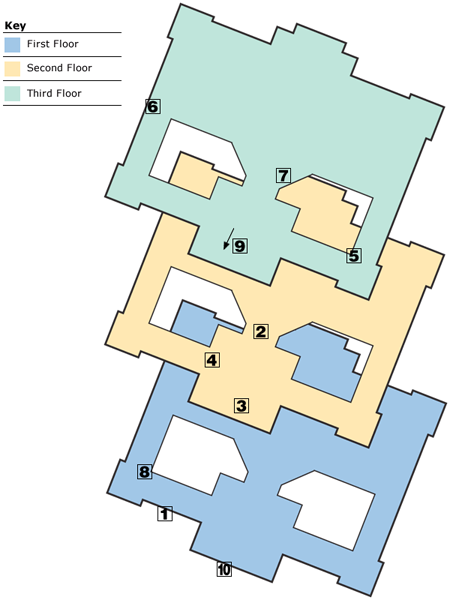
Library of Congress Floorplan
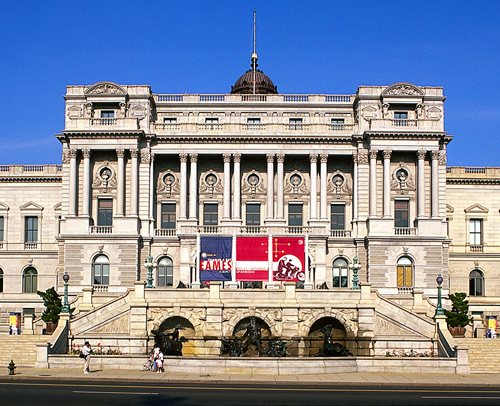
Façade
|
Free standby tickets are often available for concerts, from 6:30 pm for 8pm performances and 12:30pm for 2pm performances.
|
|
|
For visitors wishing
to use the library for research, reader cards can be obtained on the
same day by applying at Room LM 401 in the Madison Building.
|
|
A Reader’s Card is required to enter the Reading Rooms and can be easily obtained in the Madison Building
|
|
Top 10 FeaturesExterior Congress
authorized the construction of a new library building in the style of
the Italian Renaissance in 1886. Its plan reflects that of the Capitol –
two wings with a central dome. The portico contains busts of nine
“great men of literature” from Demosthenes to Washington Irving. Main Reading Room In
this splendid room the civilized arts are represented by allegorical
figures atop its eight giant columns: Religion, History, Commerce, Art,
Philosophy, Poetry, Law, and Science.
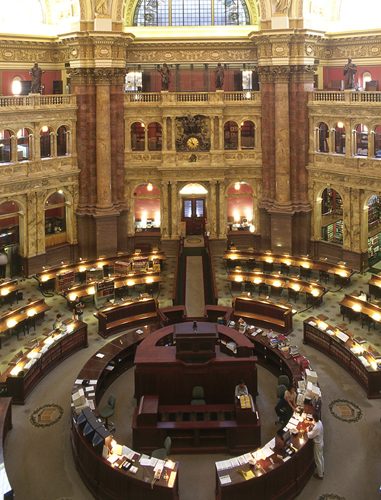
Great Hall The
ceiling, resplendent with stained-glass skylights, soars 75 ft (20 m)
above the beautiful marble floor. Ceremonial staircases at either end of
the hall are elaborately carved with scenes of cherubs engaged in
making music, catching butterflies, and using the newly invented
telephone.

Gutenberg Bible This
superb example of the first book printed with movable type is one of
only three perfect vellum copies to survive. Also here is the
handwritten Giant Bible of Mainz. Creating the United States Explore
the creative process through which the nation was born. Innovative
technology reveals how drafts of the Declaration of Independence, the
Constitution, and the Bill of Rights were forged out of invention,
insight, collaboration, and compromise. African and Middle Eastern Reading Room This
long room, for research work on this ancient geographical area, is one
of 10 that give users access to the special collections. Mosaic of Minerva A beautiful marble mosaic of Minerva overlooks the staircase near the Visitors’ Gallery.
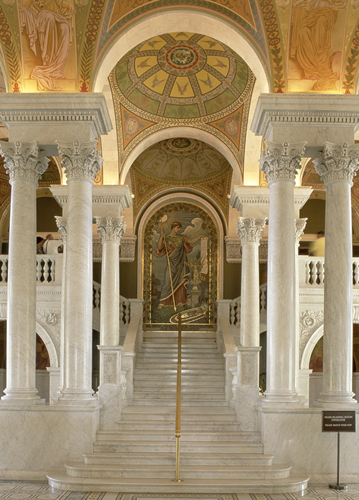
Concert Series This
distinguished series presents a range of performances: classical song,
harpsichord, solo, trio, and quartet programs, period instrument
ensembles, jazz, spirituals, and gospel. Concerts are free. Film Series Classic
films are shown in an intimate setting several times a week. Miniseries
on subjects such as jazz or Russian cinema run concurrently with the
main series. Neptune Fountain Roland
Hinton Perry sculpted this dashing tribute to the god Neptune and his
court, installed in 1898 in front of the Jefferson Building.
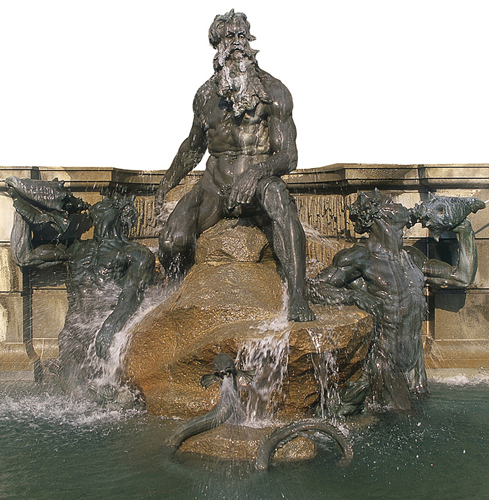
|